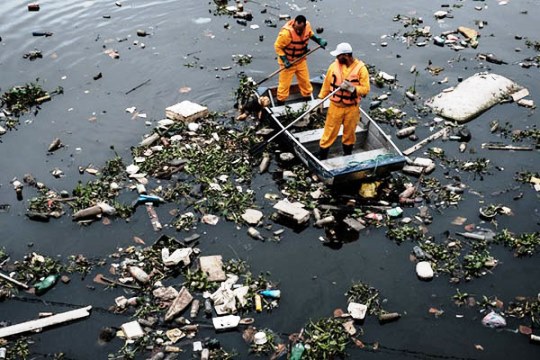Is Pipe Jetting Safe for Old Plumbing Systems? Here's What You Need to Know

Keeping a plumbing system healthy is crucial for any residential or commercial building. Still, you may wonder if newer cleaning technologies, such as pipe jetting, are safe when you have older pipes. With time, pipes—particularly in older buildings—can accumulate debris, grease, roots, and mineral deposits. That's where pipe jetting is useful. But is this high-pressure cleaning technology truly safe for aging plumbing systems? Let's get into the nitty-gritty and reveal what you should know.
Pipe jetting or hydro jetting is a plumbing pipe cleaning method that involves high-pressure water streams. A dedicated nozzle is pushed into the pipe, forcing water through at pressures ranging from over 3,000 PSI (pounds per square inch). This high-pressure stream of water can disintegrate challenging clogs, remove buildup, and even slice through tree roots.
Unlike conventional snaking or rodding, pipe jetting clears pipes and cleans the inner plumbing line walls. It's efficient, environmentally friendly, and commonly used by professional plumbers, particularly for commercial and residential drain maintenance.
Although pipe jetting is highly effective, owners of older plumbing systems tend to worry about whether the process will harm their pipes. This is a legitimate concern. Older pipes, especially cast iron, clay, or galvanized steel, have been under stress for decades. Corrosion, rust, and aging can weaken them, making them more brittle and prone to harm under high pressure.
So, the question is: is pipe jetting a safe option for old plumbing systems?
The safety of pipe jetting on old plumbing relies on some major factors:
Before any jetting service, a professional plumber will often perform a video inspection to determine the piping's condition. Jetting might not be recommended if the pipes have extensive corrosion cracks or weakened structures. However, if the pipes have good structures despite being old, pipe jetting can be performed safely.
Older houses may contain cast iron, clay, or even Orangeburg pipes (a fiber conduit used in the mid-1900s). All of these materials respond differently to high-pressure water. Cast iron, although strong, will become brittle with age. Clay pipes crack easily, and Orangeburg pipes are particularly weak. A careful inspection will determine if these pipes can handle jetting or if they need a more delicate approach.
Professional plumbers operate adjustable pressure controls on their jetting machines. When working on older systems, they can reduce the water pressure to prevent potential pipe damage. Tailored pressure levels enable technicians to clean aging pipes safely without compromising their structure.
When done correctly, pipe jetting presents many benefits, even for older plumbing systems:
Deep Cleaning eliminates grease, sludge, and grime that conventional methods can leave behind.
Prevents Future Clogs: Clean pipes are less likely to clog again, decreasing plumbing problems.
Non-Invasive: Jetting does not involve digging or pipe disassembly, saving your property.
Eco-Friendly: No aggressive chemicals are used—just water.
Professional plumbers who provide line and pipe jetting services suggest it as routine maintenance, even in older homes, as long as the system is in good condition.
There are instances where pipe jetting may not be safe:
Heavily Corroded or Brittle Pipes: Pipes with extreme rust, weakened walls, or cracking may not withstand the water pressure.
Collapsed Sections: If a section of pipe has collapsed, jetting may exacerbate the issue.
Improper Installation: The wrong-aged pipes installed incorrectly or with now-obsolete techniques might not be sealed or aligned correctly, so jetting is dangerous.
In these situations, plumbers might recommend another cleaning technique, such as snaking or pipe replacement, depending on how bad the problem is.
If you're considering pipe jetting for your older home or commercial building, here are a few steps to take:
Hire a Reputable Professional: Choose a licensed plumber experienced in working with older plumbing systems and line and pipe jetting services.
Request a Camera Inspection: Insist on a video inspection of your pipes to evaluate their condition before jetting.
Discuss Pressure Settings: Ensure the plumber employs adjustable pressure settings appropriate for your pipe age and material.
Request a Maintenance Plan: Routine maintenance with proper techniques can lengthen the lifespan of old pipes and avoid costly repairs.
Therefore, is pipe jetting safe on older plumbing systems? The reply is yes—but with caution. If done by trained professionals familiar with the strengths and weaknesses of aging pipes, pipe jetting can be a safe, long-lasting, and effective method of clearing blockages and keeping pipes healthy. It is all a matter of adequate inspection, specially adjusted pressure levels, and using the right people for the job.
If your pipes are still in good condition, line and pipe jetting service may be what you need to revive your plumbing system. Just make sure to use professionals who have your system's long-term health and integrity as a priority. Don't let age hold you back from having a clean and efficient plumbing system—just do it the intelligent way.
Copyright © 2019 Zenith Crew. All Rights Reserved .
Designed by Hub Sol